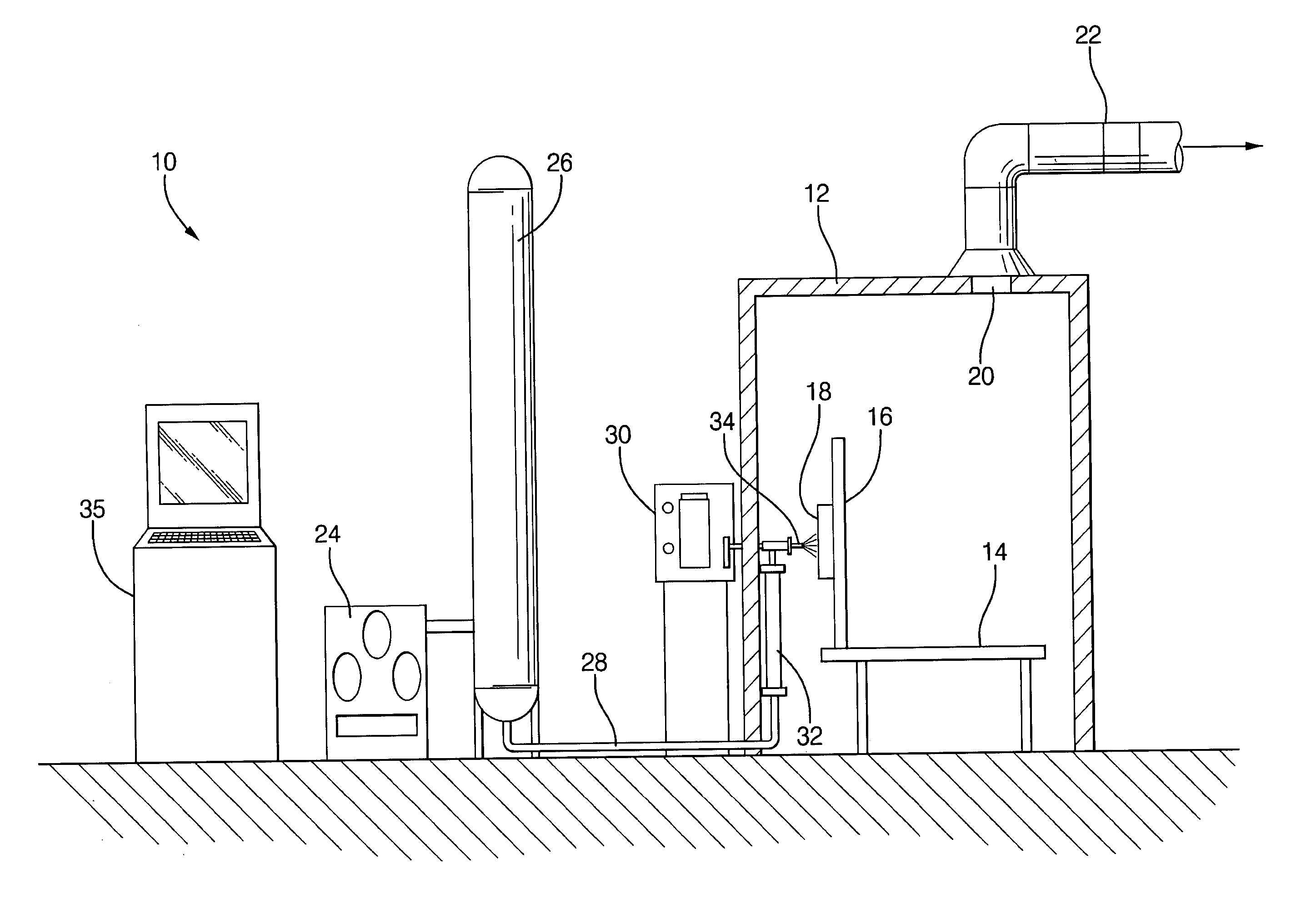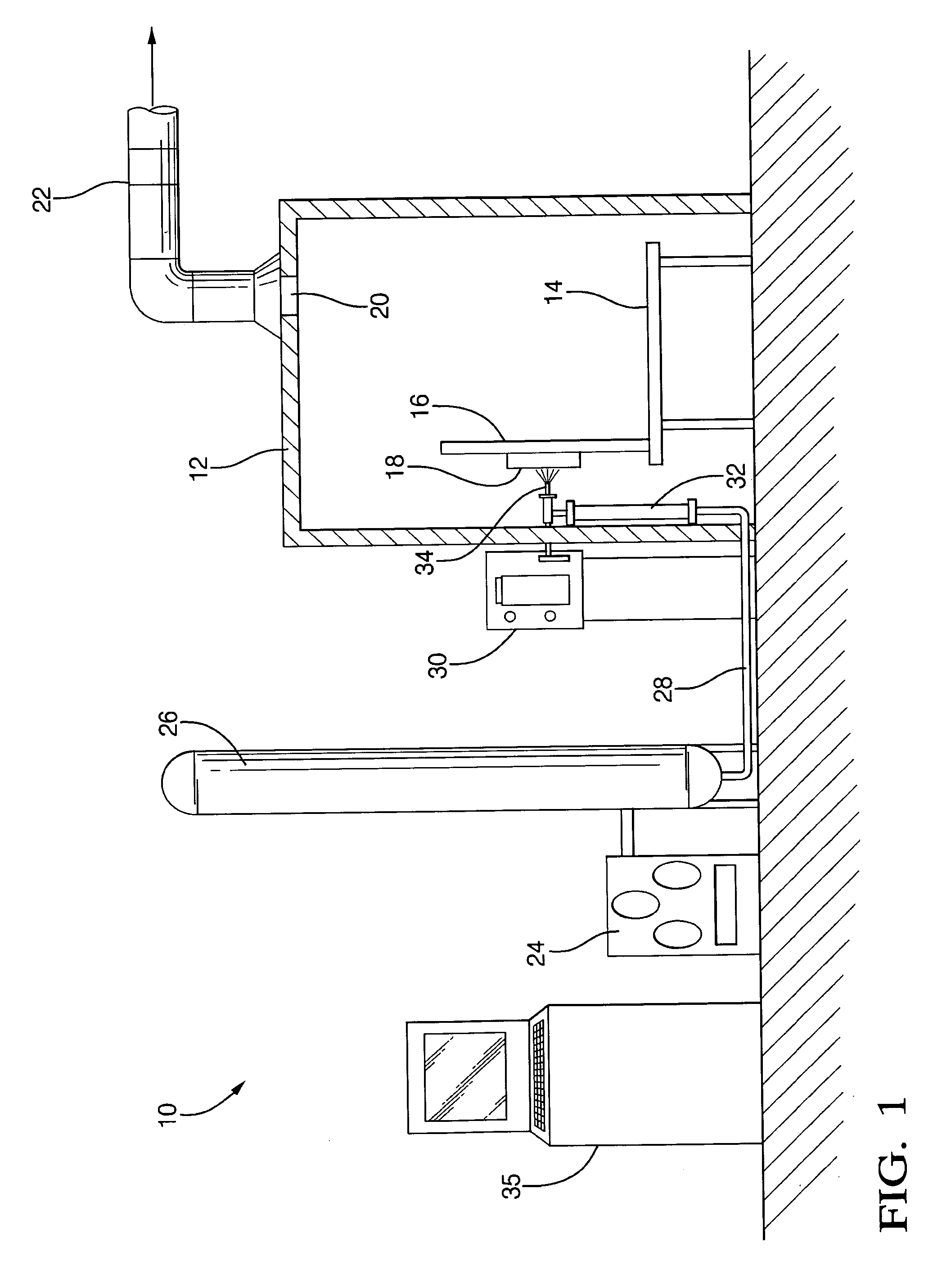Kinetic spray deposition of flux and braze alloy composite particles
a technology of braze alloy and composite particles, applied in the direction of welding/cutting media/materials, manufacturing tools, solvents, etc., can solve the problems of accelerating tool wear, requiring expensive capital equipment, occupying a large floor plan, and requiring tedious procedures, etc., to achieve satisfactory braze joints, less oxidation, and hardly deformed plastically.
- Summary
- Abstract
- Description
- Claims
- Application Information
AI Technical Summary
Benefits of technology
Problems solved by technology
Method used
Image
Examples
examples
[0053] As described above, this invention involves a single coating deposition by the kinetic spray process. FIG. 2 shows a kinetic spray nozzle system used for coating deposition using composite powders. The coating includes both the NOCOLOK® Flux and the ternary alloy Zn—Al—Si. The composite powders were prepared using a gas atomization process. During the process, both the alloying elements of the alloy such as zinc, aluminum, silicon and the brazing flux powder were incorporated into individual particles of the composite. A particularly useful particle size distribution as the feedstock powder for the kinetic spray process is between about 10 microns to about 106 microns. The coating was deposited at the following conditions:
Primary gas temperature: 620° C. (1150° F.)
Primary gas pressure: 285 psi
Primary gas flow: 60 cfm
Powder feeder gas flow: 8 cfm
Powder feedrate: 1.4 g / s
Traverse speed: 32 in / s
PCD length: 400 mm
[0054]FIG. 5 shows the cross-section of some braze joints. I...
PUM
| Property | Measurement | Unit |
|---|---|---|
| velocity | aaaaa | aaaaa |
| temperature | aaaaa | aaaaa |
| temperature | aaaaa | aaaaa |
Abstract
Description
Claims
Application Information
 Login to View More
Login to View More - R&D
- Intellectual Property
- Life Sciences
- Materials
- Tech Scout
- Unparalleled Data Quality
- Higher Quality Content
- 60% Fewer Hallucinations
Browse by: Latest US Patents, China's latest patents, Technical Efficacy Thesaurus, Application Domain, Technology Topic, Popular Technical Reports.
© 2025 PatSnap. All rights reserved.Legal|Privacy policy|Modern Slavery Act Transparency Statement|Sitemap|About US| Contact US: help@patsnap.com



